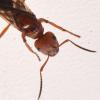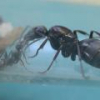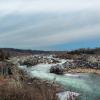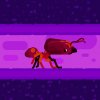I have a few species that have nest nearby each other within a one block radius and I'd like to find out what species these are precisely, so I can determine which time of year to be looking for queens of these. I hope they can be identified by the worker ants which I have taken as clear photos of as possible. The smaller ones were really tough, but managed snap a few shots.
SPECIES 1 WORKER ANT
1. Location of Collection: Surrey, British Columbia
2. Date of Collection: 2017-07-17
3. Habitat of Collection: At base of wooden telecom / power line pole along the sidewalk, nest seems to be in the base of the pole.
4. Length: 11mm
5. Coloration: head and gaster are black, gaster is mostly shiny, but mid section (2nd ring) is matte, mid body and legs are dark brown.
6. Distinguishing characteristics: 12 antennae segments, 1 petiole node
7. Distinguishing behavior: fast moving, creates sawdust piles
SPECIES 2 WORKER ANT
1. Location of Collection: Hwy 99 near Brunswick Beach, British Columbia
2. Date of Collection: 2017-07-16
3. Habitat of Collection: straw and wood covered area between a crevasse of a mountain side mound (map)
4. Length: 6-7mm
5. Coloration: mostly black in color and dark brown legs / mandibles
6. Distinguishing characteristics: 12 antennae segments, 1 petiole node
7. Distinguishing behavior: fast moving, very active in daylight, great climbers
SPECIES 3 WORKER ANT
1. Location of Collection: Surrey, British Columbia
2. Date of Collection: 2017-07-17
3. Habitat of Collection: dry tall grassy area near SPECIES 1 half a foot from the sidewalk. they don't seem to bother each other.
4. Length: 4.5mm
5. Coloration: mostly brown in color (reddish in outside daylight)
6. Distinguishing characteristics: 12 antennae segments, 2 petiole node
7. Distinguishing behavior: slow moving
SPECIES 4 WORKER ANT
1. Location of Collection: Surrey, British Columbia
2. Date of Collection: 2017-07-17
3. Habitat of Collection: ceramic planter in the backyard (2ft x 2ft x 2.5ft tall).
5. Coloration: mostly light brown in color (seemed reddish in daylight), brown head and gaster
6. Distinguishing characteristics: 12 antennae segments, 1 petiole node
7. Distinguishing behavior: moderate moving speed, poor climber of surfaces, mostly climb back in from the wilted plants hanging over edge or vine plants next to it, do climb the side surfaces slowly and most of the times unsuccessfully. Amusing to watch them fall back down often.
Edited by proto, July 24 2017 - 11:14 AM.
























